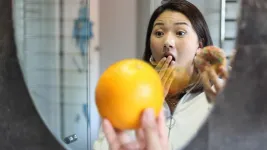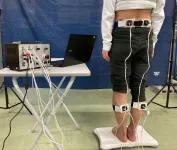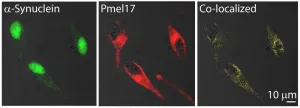(Press-News.org) Two thirds of New Zealanders believed there were 'silver linings' to the country's Alert Level 4 COVID-19 lockdown imposed in March last year, a University of Otago survey has found.
The researchers were able to question New Zealanders while they were at home, giving a unique insight into their lives during the nationwide lockdown between 25 March and 23 April, widely regarded as one of the strictest imposed anywhere in the world.
One year on from lockdown, the results of their study have been published in the international scientific journal, PLOS ONE.
Participants were asked 'Have you experienced any silver linings, or positive aspects during the COVID-19 Level 4 lockdown' and were able to answer 'yes, for me personally', and/or 'yes for wider society', or no. Of the 2,010 participants who completed the online survey, 64 per cent said they could see a silver lining to lockdown.
Lead researcher Dr Matthew Jenkins says New Zealanders talked about a wide range of positive experiences during lockdown, from pride in the country's response, to having more free time to exercise, take up hobbies, or build relationships with their neighbours.
"Lockdown represented a major flashpoint in people's lives and created an opportunity to stop, take stock and to reflect and connect with others.
"Many people reported that kindness and helping behaviours became more common over this period. They described an 'old fashioned sense of community and caring ... that was not apparent before lockdown'."
Increased flexibility in working from home and reduced time spent commuting was frequently mentioned as one of the silver linings of lockdown, enabling people to spend more time with their families.
"Because of the social distancing measures in place, technology became a major way for people to connect socially and for work via online services such as videoconferencing. One participant reported they 'got to speak with my Dad, who lives overseas, daily' while another joined a global online knitting group to maintain social interactions."
Others reported the pride they felt in the country's response to the pandemic, with one commenting, 'we may be a small country, but we are doing an amazing job'.
"There was an increased sense of national unity, expressed by one participant as '... it's brought New Zealanders together, united in our shared COVID experience'."
Participants also talked about the respite that lockdown offered for the environment, with one observing there was, 'less air pollution and nature (was) having a break from humans destroying it' and another enjoying 'hearing birds sing'.
Dr Jenkins says the research offers a valuable insight into what kinds of support could help people survive and thrive under adverse circumstances.
"Our findings show that in a time of turmoil, unrest and psychological distress, many people nonetheless found silver linings. We also speculate that, despite the impact of the lockdown, many people had their psychological needs for social connectedness and autonomy met, and these were likely to have influenced compliance with lockdown measures.
"Identifying these silver linings will help Governments and mental health practitioners identify the support required to help people survive and thrive during prolonged and stressful events, such as pandemics and lockdowns."
INFORMATION:
Can a mirror turn an orange into a doughnut? The answer is definitely no in the real (macro) world. But at the nanoscale, a mirror can turn an "orange" shaped pattern into a "doughnut" shaped pattern by overlapping the "orange" with its reflected mirror image.
A team of researchers from the University of Technology Sydney (UTS) has shown for the first time that fluorescent nanoparticles placed near a mirror generate unique patterns that can be used to pinpoint their location.
The researchers attribute this effect to the light emitting nanoparticle's interference with its own mirror image. Using this method they can also detect the size of particles to a resolution of one nanometre - or around 1/80,000th of the diameter of a human ...
Areas with a relatively greater amount of misogynistic tweets have higher incidences of domestic and family violence, a UNSW study has found.
The study, published in Psychological Science, not only found this connection with domestic and family violence carried over from one year to the next, but also occurred despite the 'usual suspects' of domestic violence, such as alcohol and inequality.
Examples of misogynistic tweets identified by the researchers included, "Women are all bitches," "Whore had it coming," and, "Make me a sandwich, slut."
"We found that misogynistic ...
Ever since the early humans learned to walk upright, they have suffered, as an unfortunate consequence of their erect posture, from low back pain. Modern understanding on this matter dictates that low back pain, in particular, is caused due to a postural instability resulting from poor "proprioception", which is a term for the perception of part of our body's own position in space. In fact, our trunk and lower legs are key to maintaining postural stability due to the presence of "proprioceptors"--sensory receptors responding to position and movement--in those areas.
Elderly people suffering from low back pain tend to have poorly performing proprioceptors, ...
COLUMBUS, Ohio - Researchers have found a way to use chaos to help develop digital fingerprints for electronic devices that may be unique enough to foil even the most sophisticated hackers.
Just how unique are these fingerprints? The researchers believe it would take longer than the lifetime of the universe to test for every possible combination available.
"In our system, chaos is very, very good," said Daniel Gauthier, senior author of the study and professor of physics at The Ohio State University.
The study was recently published online in the journal IEEE Access.
The researchers created a new version ...
(Boston)--Diagnosing Chronic Traumatic Encephalopathy (CTE) during life is crucial for developing therapies and for determining how common the disease is among individuals exposed to repetitive head impacts from contact sports, military service and physical violence.
While the ability to diagnose CTE prior to death has remained elusive, researchers from Boston University School of Medicine (BUSM) for the first time have shown that progressive memory loss and issues with executive function, the ability to focus, follow directions, and problem-solve, are more useful for predicting CTE pathology than mood and behavior symptoms.
CTE is a progressive brain disease. Clinically, impulsivity, explosivity, depression, memory impairment and executive dysfunction have been reported to ...
WASHINGTON, April 7, 2021 -- On the surface, Parkinson's disease -- a neurodegenerative disorder -- and melanoma -- a type of skin cancer -- do not appear to have much in common. However, for nearly 50 years, doctors have recognized that Parkinson's disease patients are more likely to develop melanoma than the general population. Now, scientists report a molecular link between the two diseases in the form of protein aggregates known as amyloids.
The researchers will present their results today at the spring meeting of the American Chemical Society (ACS). ACS Spring 2021 is being held online April 5-30. Live sessions will be hosted April ...
DALLAS, April 7, 2021 — Receiving palliative or hospice care services was found to improve quality of life for hospitalized ischemic stroke patients, however, disparities persist in which patients are prescribed or have access to these holistic comfort care options, according to new research published today in the Journal of the American Heart Association, an open access journal of the American Heart Association.
Prior to the COVID-19 pandemic, stroke ranked No. 5 among all causes of death in the U.S. Nearly 9 in 10 strokes are ischemic strokes caused by a blockage in a blood vessel that carries blood to the brain. Despite advances in acute stroke treatment and management, stroke remains a leading cause of serious long-term disability in the U.S.
“Stroke ...
Skoltech chemists have proposed a new electronegativity scale and published their findings in Nature Communications.
The concept of electronegativity introduced by Linus Pauling, a great American chemist, in the 1930s refers to the ability of an atom to attract electron density. In a chemical bond, the more electronegative atom gains extra electrons, becoming negatively charged, while the less electronegative one loses electrons and becomes positively charged. Electronegativity is a fundamental notion, essential for explaining things that range from chemical bonds' energy to the (in)stability of chemical compounds and the color and hardness of crystals.
Since then, chemists have come up with various definitions and scales of electronegativity. Yet Pauling's ...
Events such as the COVID-19 pandemic have highlighted the crucial role played by biodiversity collections in enabling rapid responses to crises and in facilitating ongoing research across numerous fields. Despite the recognized value of this infrastructure, the community nevertheless has further opportunities to maximize its value to the scientific enterprise.
Writing in BioScience, Barbara Thiers of the New York Botanical Garden and colleagues describe (https://academic.oup.com/bioscience/article-lookup/doi/10.1093/biosci/biab036) the necessary steps for the biodiversity collections community to vouchsafe its position as an important catalyst of research. The authors draw on recommendations ...
A new scientific review has found there are significant gaps in our knowledge of how mammal populations are responding to climate change, particularly in regions most sensitive to climate change. The findings are published in the British Ecological Society's Journal of Animal Ecology.
Nearly 25% of mammal species are threatened with extinction, with this risk exacerbated by climate change. But the ways climate change is impacting animals now, and projected to in the future, is known to be complex. Different environmental changes have multiple and potentially contrasting, ...




